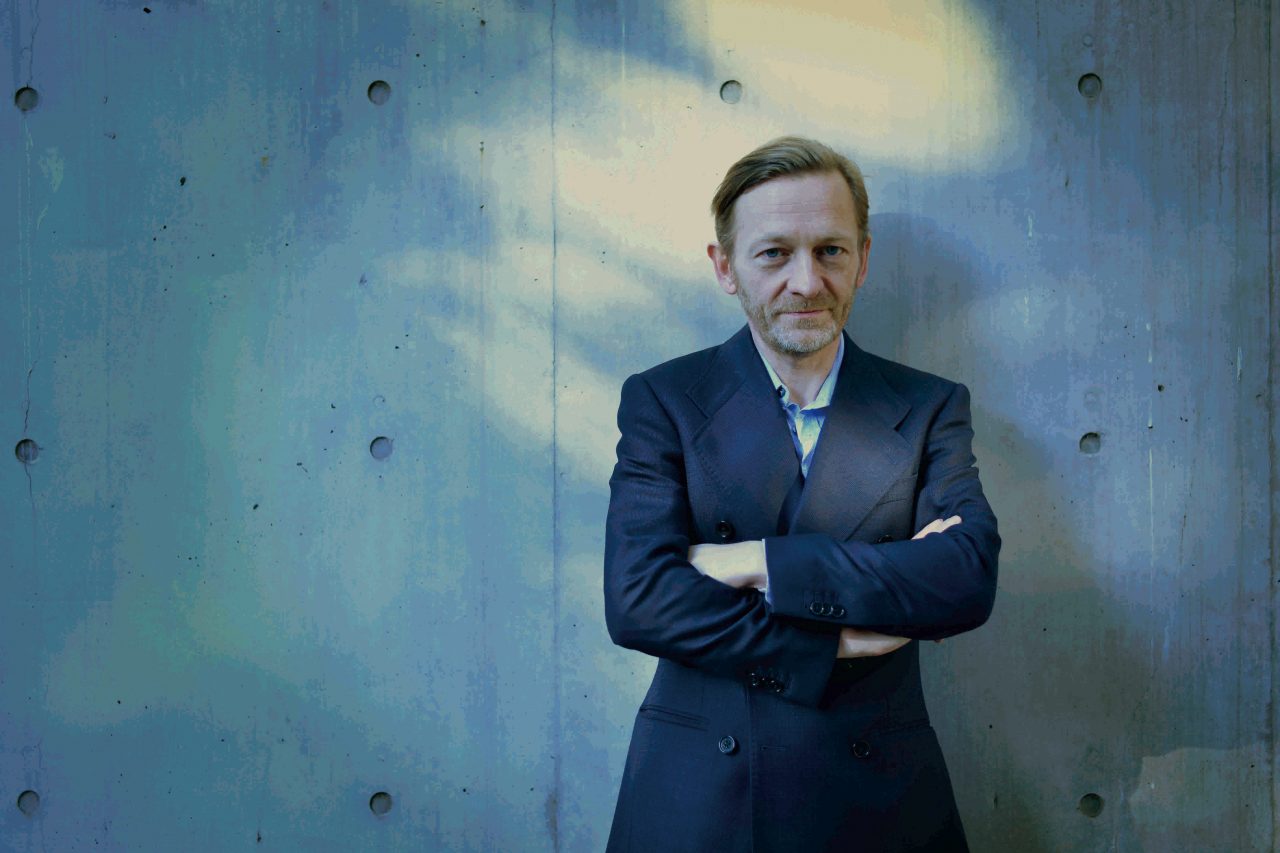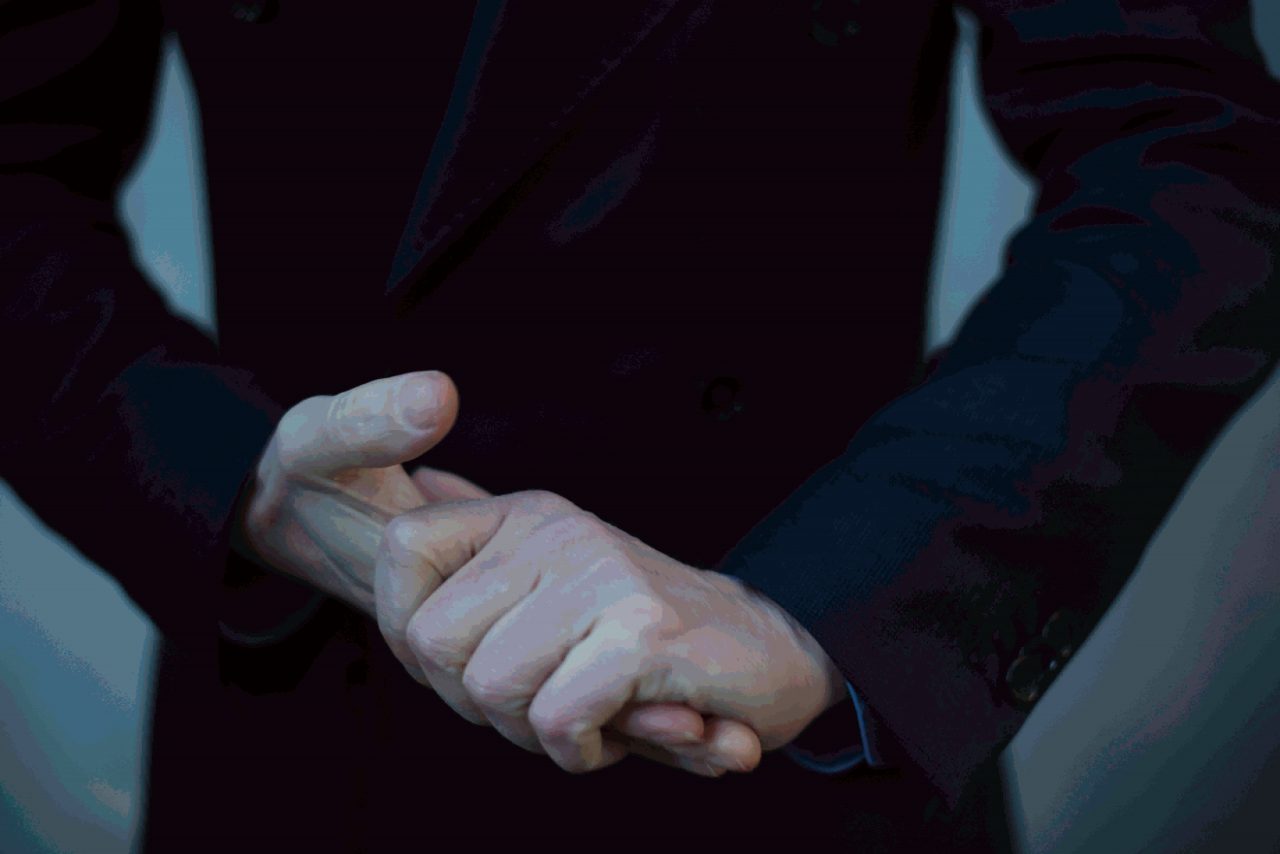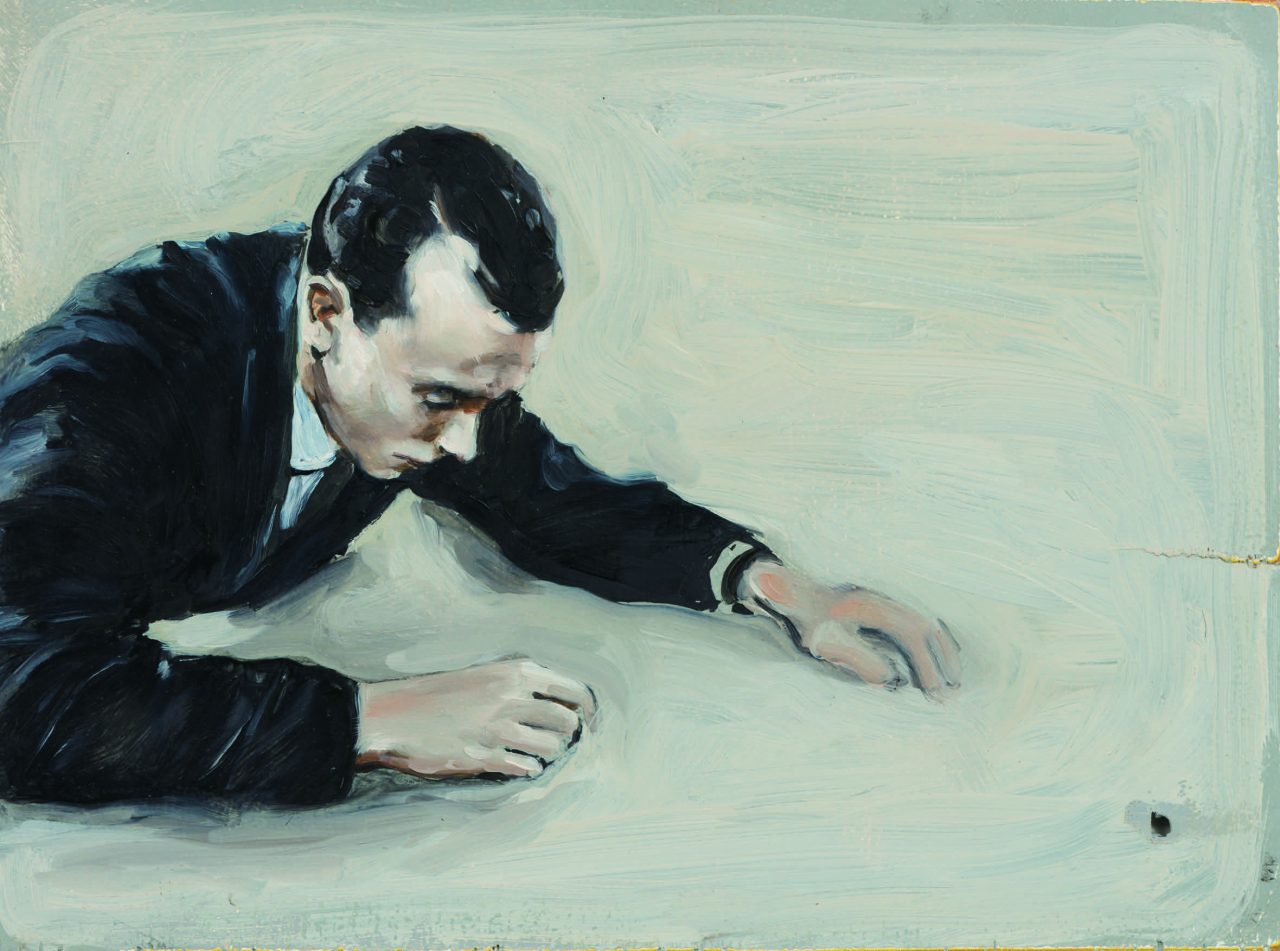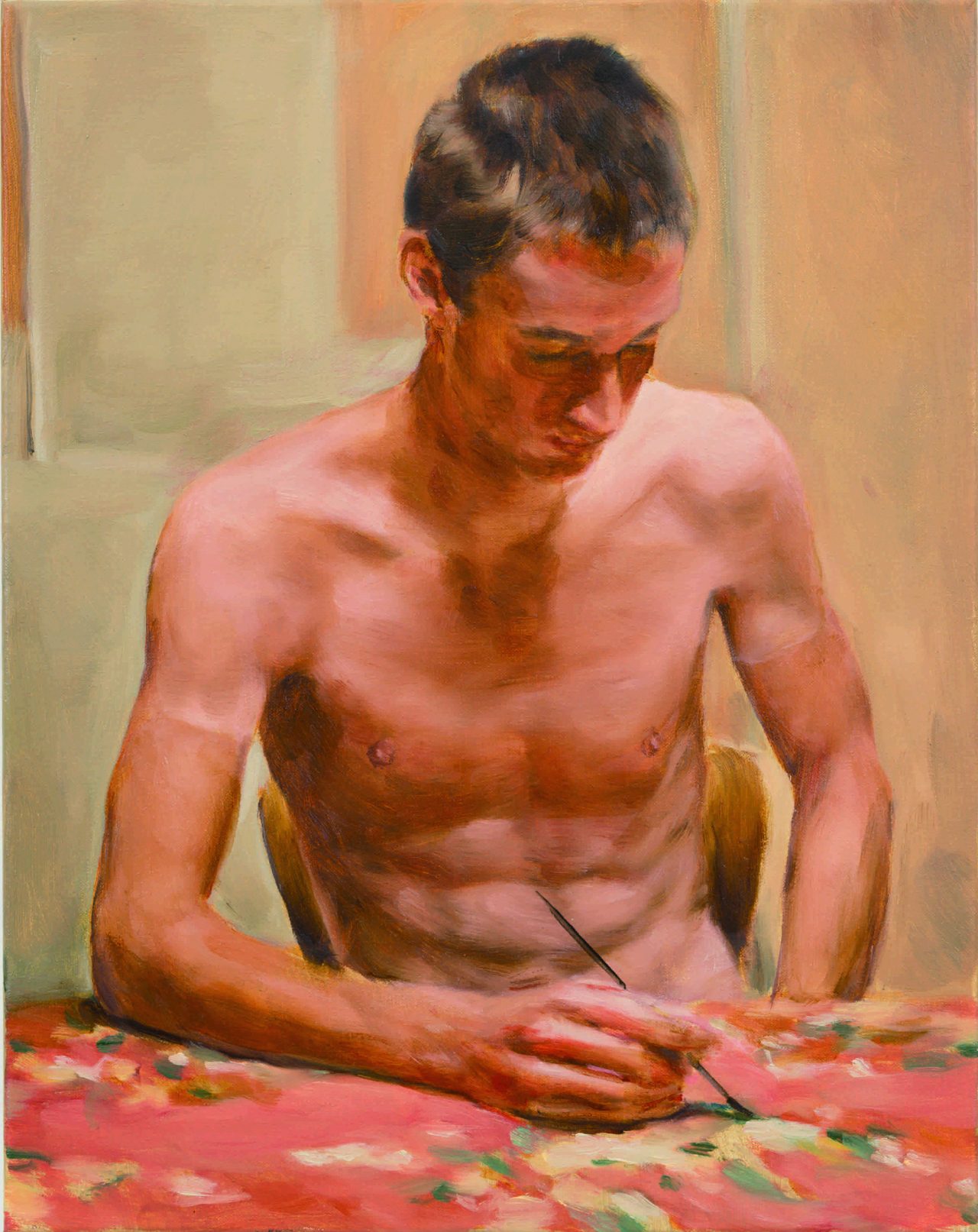Michaël Borremans
A Complex Beauty In One Of The Most Important Painters Of Our Time

Belgian painter Michaël Borremans is not just another painter, and certainly not one to underestimate. Perhaps one of the most important contemporary painters of our time, his paintings are striking yet complexing, drawing a viewer in. From only starting his painting career already in his 30’s, he has certainly achieved and influenced significantly, in such little time.
ベルギー人のMichael Borremansはたただの 絵描きではなく、見くびることはできない。 おそらく現代の画家の中でも最も重要な人物 の一人であり、彼の作品はとても目を引いて、な おかつ複雑で見る人を惹きこむ。 30代になってから画家としてのキャリアを積み 始めたにも関わらず、彼はすでに完成系に近づ き始め、短い期間で著しく影響を与えている。

Likened to early-modern artists such as Velasques and Manet, his use of a darker colour palette provides a distinctive character for his work. Each painting is an intended mystery, an undefinable piece to a non-existent puzzle that leaves the viewer in constant questioning. How rare to come across this, when usually things are carefully explained and presented to us in an easily identifiable way. Or maybe it is the curiosity and imagination for what could be, that is in fact resonating in Borreman’s work.
Working in an unconventional way to paint, he physically recreates an intended scene and photographs it himself to be the subject of his paintings later. This is the way he envisions his paintings and executes them. If contemporary art is a true reflection of our current society and times, his work perfectly contemplates the complexity and constant unpredictability that undeniably exists.
We met with Michaël during preparation for his solo exhibition, The Advantage, held at the equally majestic Hara Museum in the Tokyo suburb, Shinagawa. Here, 30 paintings were shown in the beautiful surrounds of the building originally built in 1938 during the Shōwa period.
Full of energy and humour, Borremans is a surprising contradiction to the dark, brooding portraits and paintings he produces. We speak about his life in Belgium, his own influences to his mysterious work, and his admirably full schedule of museum and gallery shows ahead this year…
VelasquezやManetのような近世の モ ダ ン 画 家 に な ぞ ら え な が ら 、暗 め の 色の多いパレットを多用することで、彼 の 作 品 に 独 特 な 特 徴 も も た らし て い る。 どの絵もミステリー感を意図してい て、実在しないパズルのundefinable なピースが、ある一定の問いかけを見 る者に与える。もしたいていの物事が、 明確で共感しやすい方法で、注意深く 説明されて提示されたとしても、あるい は、Borremansの作品において共感で きる事実とは何なのか、それに対する好 奇心や想像力なのかもしれない。 型にはまらない技法で、彼は物理的に 意図したシーンを再現したり、最近では 彼の作品のサブジェクトとして彼自身を 撮影したりしている。
これが彼の思い描く絵描きの方法であ り、実際のやり方である。 もし現代アートが我々の今日の社会や 時勢の本当の反映だとしたら、彼の作 品は明らかに存在する複雑性や不変 的に予測できないものを完璧に考察し ている。
私たちはMichaël出会ったのは、東京 の大きな街である品川の威厳ある原美 術館で開かれた彼の個展であるThe Advantageの準備であった。ここでは、 昭和の1938年に建てられた建築物に 囲まれた美しい環境で、30点の作品が 展示された。
エネルギーとユーモア溢れていて、Borremansの描く暗くて血泥味のポートレ ートとの驚くべき矛盾に驚く。私 た ち は 、彼 の ベ ル ギ ー で の 生 活 や 、 彼のミステリアスな作品に対する影響、 そし て 今 年 の 驚 くほ ど 満 た さ れ た 美 術 館やギャラリーでの個展スケジュールに ついて話す。

CHAMP / This is a beautiful place to hold an exhibition.
How did you approach the installation, did it go as well as planned?
MB / It went even better than I expected. I was really looking forward to it, because the first time I visited the Hara Museum I fell in love with it. The building, the space… Then I got invited a couple of years later to exhibit in the space. Usually, I do prefer to show my work in smaller institutions, in smaller presentations, but here it is perfect and a little more intimate.
How did the exhibition come about?
So, I was invited to show here, and then I had to make a selection of works. The most of which came from Belgium, and works from Japan. It is an interesting body of work, and I think we made a very good selection. The installation went very smooth, everything seemed to have it’s place already, I just had to add the final touches.
Usually when you are installing shows, is there something in common that you always expect to have in particular or do you bring with you just in case?
In terms of preparation for the space, these days I always feel more and more intuitively. I check the space, and I select the work that is best suited for that spot, and that’s where it starts. Then I’m sure I’m right at that point.
You’ve just mentioned that some works are from Japan, where do you work here in Japan?
They have been lent from private collections here in Japan. Two works are from the International Museum of Osaka, and some Japanese private collectors. But they are mostly all brought over from Belgium.

When you are working in Belgium, how much does your environment influence you?
I guess I’m conscious about the influence of the environment, the weather, the atmosphere. But I realise that everything is a possible influence. From the people that are around you at the time, your surroundings, health, everything is less or more of an influence. The way you feel… I could live and work where ever I want in the world, but still I stick to Belgium. For me it’s mostly to do with the climate, it’s always cloudy and rainy and it produces a very specific light where I can see colours that I don’t see normally see. The colours of light, which are also very strong for me. It’s my heimat*, it’s my root ground, so that’s always a very strong thing. At the same time I want to make very universal work. England I could live in, I think I should try it, it’s the same climate!
* Heimat: A Critical theory of the German idea of homeland.
Do you feel alright staying indoors and working? On a sunny day it’s too nice not to be outdoors.
Yes, thats right, another reason why I like to be in Belgium, we don’t have many sunny days. When it’s a sunny day, I hate to be inside. If I worked in Los Angeles, I would never be working, I would be outside on a boat or at the beach, doing useless things. So if I am forced to stay indoors, the only thing I can do is work. But I like working. Working for me is not like working, it’s just what I do, it’s who I am, it’s very close to my personality, and it’s a very natural thing to do what I do.

Yes, more of a passion, rather than work.
Yes, or a responsibility or a calling I guess you could say. It really feels that way because I had a sense from an early age, and I never had to choose what I wanted to do, it was just clear since I was 6. I began just drawing, I wanted to be comic-strip artist / illustrator. But then I went to art school when I was fifteen and the painting came later. I am very humble, I still feel like a student.
Is there a particular moment that influenced you or inspired you significantly to go in this direction, a specific moment?
I remember the exact day and moment when I decided – I am going to paint. It was very strange. It was a sunny afternoon, I was renting a small house and I had a very little studio in an attic. I was only drawing at the time, I had tried some painting before but it had never really satisfied me, but at this moment I said to myself, I am going to really focus on painting, I’m going to quit my job I’m going to draw less and I am going to study painting, for years if necessary, to really go all the way, because if I don’t try that I will really blame myself.
I felt a responsibility to try it. The reason I chose painting is because I found out with the drawings, that I could do whatever I wanted with the drawings and its fascinating. However when you show your drawings, they don’t make as much sound as painting, and it’s very hard to draw attention to your work. If I do what I do, and I can translate this into painting, then I can nd a better platform to present my ideas. I chose to work in painting for very rational reasons and it worked. So… good thinking!

Did you have paints in your space at the time, so you could start painting straight away?
Ah no, I realised also in this little room I couldn’t paint. So I started to paint very small, and realised the need to nd another place. I soon found a studio quite big, in fact it was an old carpen- ters shop. Even when I bought it with all the money I had, I first was traditionally thinking that it could be my headquarters for me work in, have different studios, and live in too. Strategy.
Very organised!
Also, talking about surrounding and creative influences. a lot of your paintings have a subject, a sense of humanity in them. Do you find yourself enjoying time in crowds or being amongst others?
Mostly not. I love to observe, to watch people when I am alone in a foreign place or familiar place. But I don’t like big crowds, or being part of a crowd. I like to feel like an outsider, as I feel in a large group I lose my individuality.
In Belgium, where are you favourite places to visit?
I love to be in the country. I love to go hiking – very old-fashioned!
Who else are you inspired by?
That would be long! I am very conscious about the influence of gurus like Man Ray. I was very fascinated with Man Ray when I was a young man, because he was an artist that was not only active in the artistic field, but he was in fashion. He was for me someone I admired, a very interesting person. Also Marcel Duchamp, because he was a bit like an intellectual joker, who turns things around, who’s also very misunderstood I think, and very copulated, in a very boring way. And in that way, in the ‘misunderstood’, I find understanding. Also image-makers and photographers, writers less, but I see a lot of similarities in what I do with some writers.
∆∆

Interview Joanna Kawecki | Tokyo Editor-In-Chief
Photography Satomi Yamauchi
Translation Asuka Ishigami | With Thanks Yasuko Kajita
Published in print issue Champ Magazine 8

































